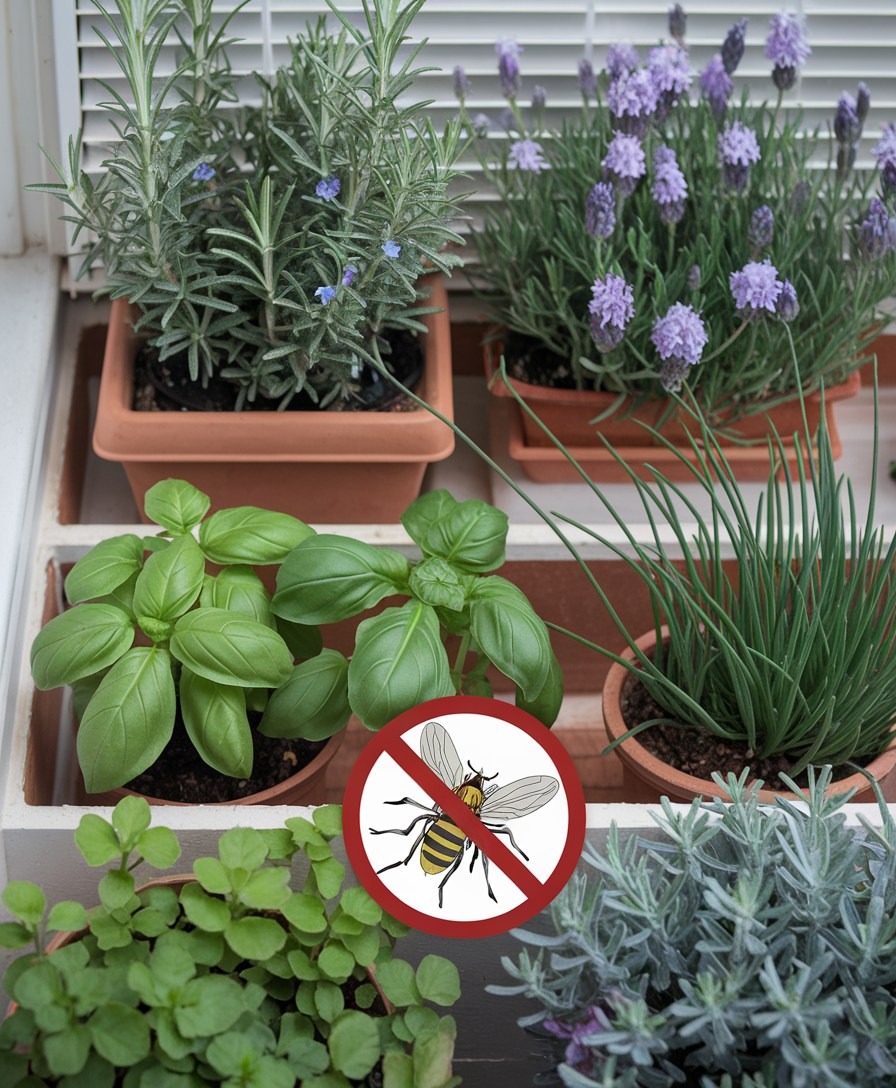Dealing with flies, mosquitoes, and ants can quickly turn your outdoor haven into a battleground. These pests are not only a nuisance but can also carry diseases and cause discomfort. Thankfully, nature has a solution. By adding these plants to your garden or patio, you can create a natural barrier to keep unwanted bugs at bay while enhancing the beauty of your space.

1. Basil
The strong aroma of basil is a natural deterrent to mosquitoes, flies, and other pests. Simply having basil plants around your garden or patio can help keep these bugs away. Additionally, you can make an insect repellent spray by steeping fresh basil leaves in boiling water, letting the mixture cool, and adding vodka for extra potency.
Basil thrives in full sun and nutrient-rich, moist soil. While it’s typically grown as an annual, in USDA zones 10-11, basil can be a perennial.
2. Lavender
Lavender’s sweet, calming scent is a favorite for humans but disrupts a mosquito’s sense of smell, making it an effective natural repellent. The essential oils in lavender flowers boast an 80.9% repellency rate against certain mosquito species. You can use lavender oil directly on your skin as a natural mosquito repellent, and hanging dried lavender in your closet can also keep moths away. This versatile plant thrives in full sun and well-draining soil, making it a perfect addition to your pest-free garden.
3. Mint
Mint’s fresh and invigorating aroma is a nightmare for mosquitoes, flies, and ants. You can also dry the leaves and use them inside your home as a natural pest control method. However, mint is highly invasive when planted directly in the ground, so it’s best to grow it in pots to prevent it from overtaking your garden. Whether fresh or dried, mint is a great way to keep pests at bay while adding a lovely scent to your space.
4. Rosemary
Rosemary’s woody fragrance repels mosquitoes, cabbage moths, and carrot flies. To make a simple insect spray, boil a quart of dried rosemary in water for 20-30 minutes, then strain it into a container of cool water. This liquid can be used as a bug repellent when needed. Rosemary thrives in sunny, hot, and dry climates, making it an ideal plant for a sunny garden spot.
5. Citronella
Citronella grass is well-known for its oil, a common ingredient in natural mosquito repellents. This low-maintenance plant grows best in USDA zones 10-11 and loves warm weather. Besides its mosquito-repelling properties, citronella adds a refreshing lemony scent to your garden or patio, creating a pleasant outdoor atmosphere.
6. Marigold
Marigolds are vibrant flowers that not only beautify your garden but also act as natural pest repellents. They effectively deter mosquitoes, aphids, and nematodes. These hardy plants thrive in full sun and well-drained soil, tolerating dry conditions well. Marigolds are an excellent choice for adding a splash of color while keeping bugs at bay.
7. Eucalyptus
Eucalyptus is a multipurpose plant that repels mosquitoes, flies, and ants with its fresh and distinct aroma. You can make your own eucalyptus oil spray by boiling the leaves and mixing the strained liquid with vodka. However, keep in mind that eucalyptus can be toxic to pets, so place it carefully if you have animals around. Its dual-purpose functionality makes it a valuable addition to any garden.
8. Catnip
Catnip contains a compound called nepetalactone, which is incredibly effective at deterring mosquitoes and flies. Research suggests that it may be even more effective than DEET. Catnip grows best in sunny spots with well-draining soil and can reach heights of three to four feet. Its lavender flowers are a bonus, adding beauty while keeping pests at bay.
9. Lemon Balm
Lemon balm does double duty as a mosquito repellent and a soothing herb for upset stomachs and stress relief. It also attracts pollinators like bees and butterflies while keeping fleas away from pets. However, lemon balm is highly invasive and spreads quickly. To keep it contained, it’s best to grow it in pots rather than directly in the ground.
10. Sage
Sage is a versatile perennial plant that helps keep pests away with its earthy aroma. Tossing sage into a fire creates a smoke that repels mosquitoes and other bugs. Sage thrives in USDA zones 5-8 but can also be grown in pots and brought indoors during colder months. It prefers full sun and well-draining soil, making it easy to maintain.





